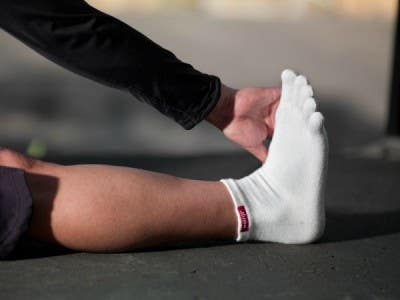From the first time we’re taught how to exercise, we’re told about the importance of stretching beforehand. Fitness gurus assure us that stretching properly will guarantee less muscle pain after our workout, plus more flexibility and a reduced possibility of injury. If you’ve been working out for any period of time, you might limber up before your workout out of habit – or, you might have abandoned the stretching routine entirely, being convinced that it doesn’t do any good (or worse, more harm than good). But everyone can agree that getting some level of mobility and flexibility into your body is a positive thing, and even a few quick stretches can help loosen up tight muscles.
Let’s take a look at the effects of stretching on your body, and some ideal stretches for specific athletic activities.
What happens to your body when you stretch?
We’ve all experienced the brief, satisfying euphoria that comes with a really good stretch – usually after you get up in the morning. When you stretch out your limbs before you begin a workout, it’s kind of the same thing – it releases tense muscles and wakes up your body’s range of motion. Also, over time, it may even train your body to be more flexible.
“When you make stretching a habit, you slowly stretch out the connective tissues of your body,” says an article on stretching at Livestrong. “Over time, this lengthens the tissues, improving the range of motion in your joints, and in turn, your overall ability to move.”
Stretching does have its detractors, however. Studies done have shown that there’s a negative effect that can be felt when stretches are held for too long. This is especially true when “static stretching” was examined in scientific studies and deemed to actually cause harm to athletic performance. Static stretching – the act of stretching out the muscles and holding them to the point of discomfort, especially if the body was at rest right beforehand – “appeared to cause the nervous system to react and tighten, not loosen, the stretched muscle” says The New York Times in their report on the research.
Unfortunately, for many of us, the not uncommon static stretching act of pulling one’s hamstrings and touching one’s toes is all too familiar. For those who are really dedicated to finding the best stretching routine, there has to be a better alternative.
Getting into dynamic stretching
The New York Times article recommends stretching before an activity especially for “hockey goalies, gymnasts, cheerleaders and dancers” – but that doesn’t mean everyone shouldn’t get into it. The answer: dynamic stretching. The yin to static stretching’s yang, dynamic stretching relies on continually keeping the body moving while you stretch, rather than static stretching’s holding a stretch position in place.
Greatist has a fantastic piece on full-body dynamic stretching, and also lists off the top reasons why you should be utilizing these moves: they engage the muscles that you’ll actually be using in your workout; they improve your range of motion and body awareness (your coordination and balance in particular, which can help your athletic performance); they can help you lift more weight because your muscles are already warmed up.
Unlike static stretching, dynamic stretching seeks to loosen up the muscles that you’ll specifically be using – and needing – for most types of exercise. Dynamic stretches might seem a little silly at first, but they’re meant to help you limber up and have a little more fun than just holding a toe-touch. Good examples include arm swings and leg swings (simply let each arm and each leg take a turn at free-swinging forward and back, for a ten-count of each), walking lunges, duck walks and crab walks, doing two lengths of high knees (raising each knee up to your chest as you move), and performing long jumps for a length and back.
Even if you’ve long since become disenchanted with the idea of stretching before a workout, you might want to give dynamic stretching a shot and see if you notice a difference in your muscles before, during, and after exercise.
Conclusion
While studies show that the traditional type of stretching may actually be detrimental to exercise, a few tweaks and the addition of dynamic movement can do wonders for making stretching effective and enjoyable. Ensuring that your body is primed for a full range of movement and mobility can be the difference between a quick recovery vs. sore muscles the next day. Do away with the static stretching technique (for now) you know and try something dynamic – it could just make you a stretching convert.
Do you stretch before (or after) your workout? What’s your most effective stretching technique? Let us know in the comments. Also, check out how spreading your toes during a stretch could help with balance and stability.








